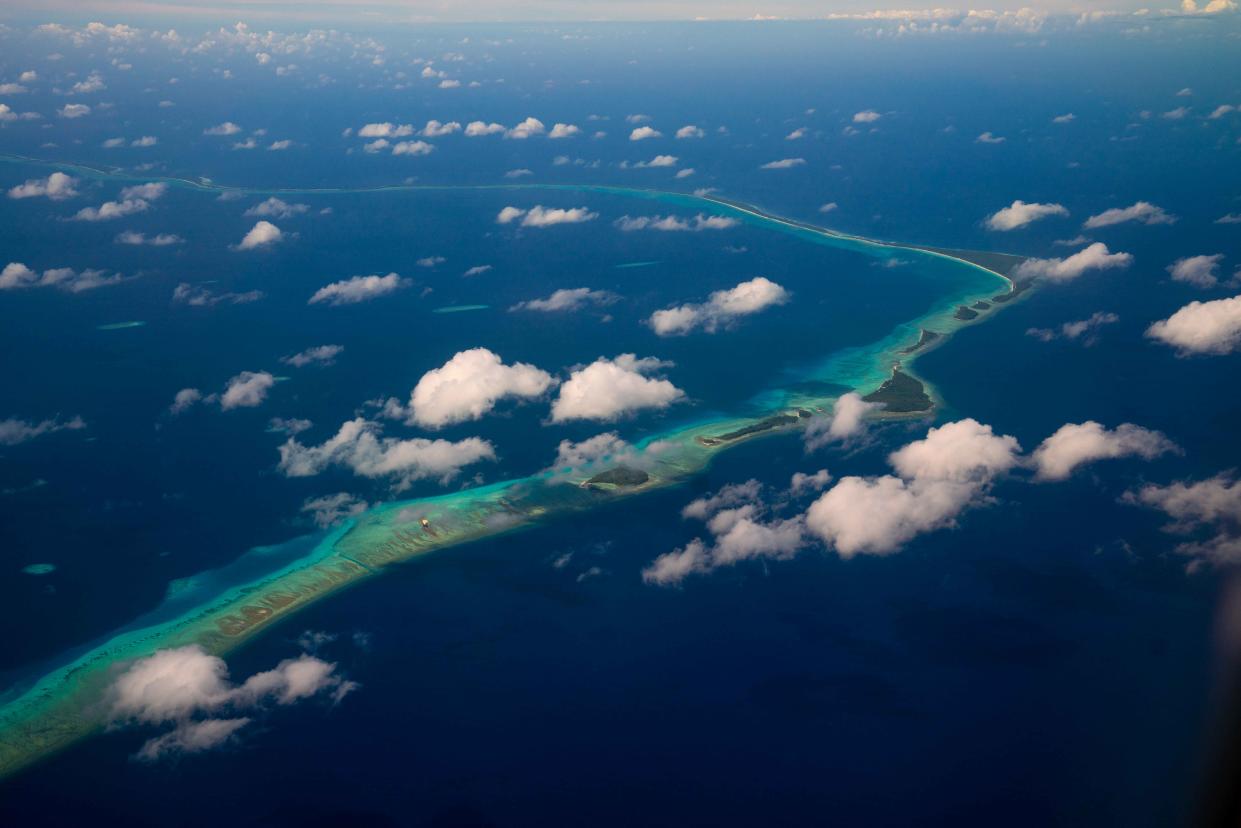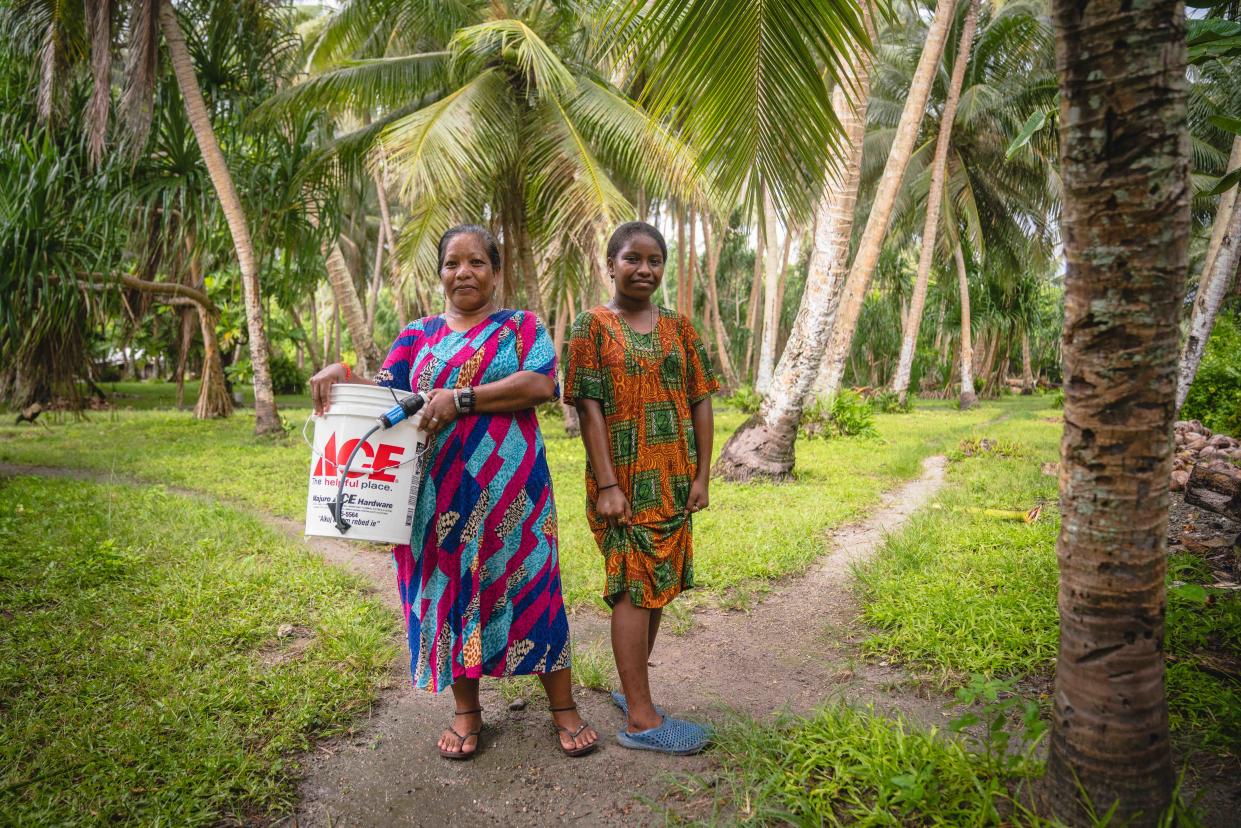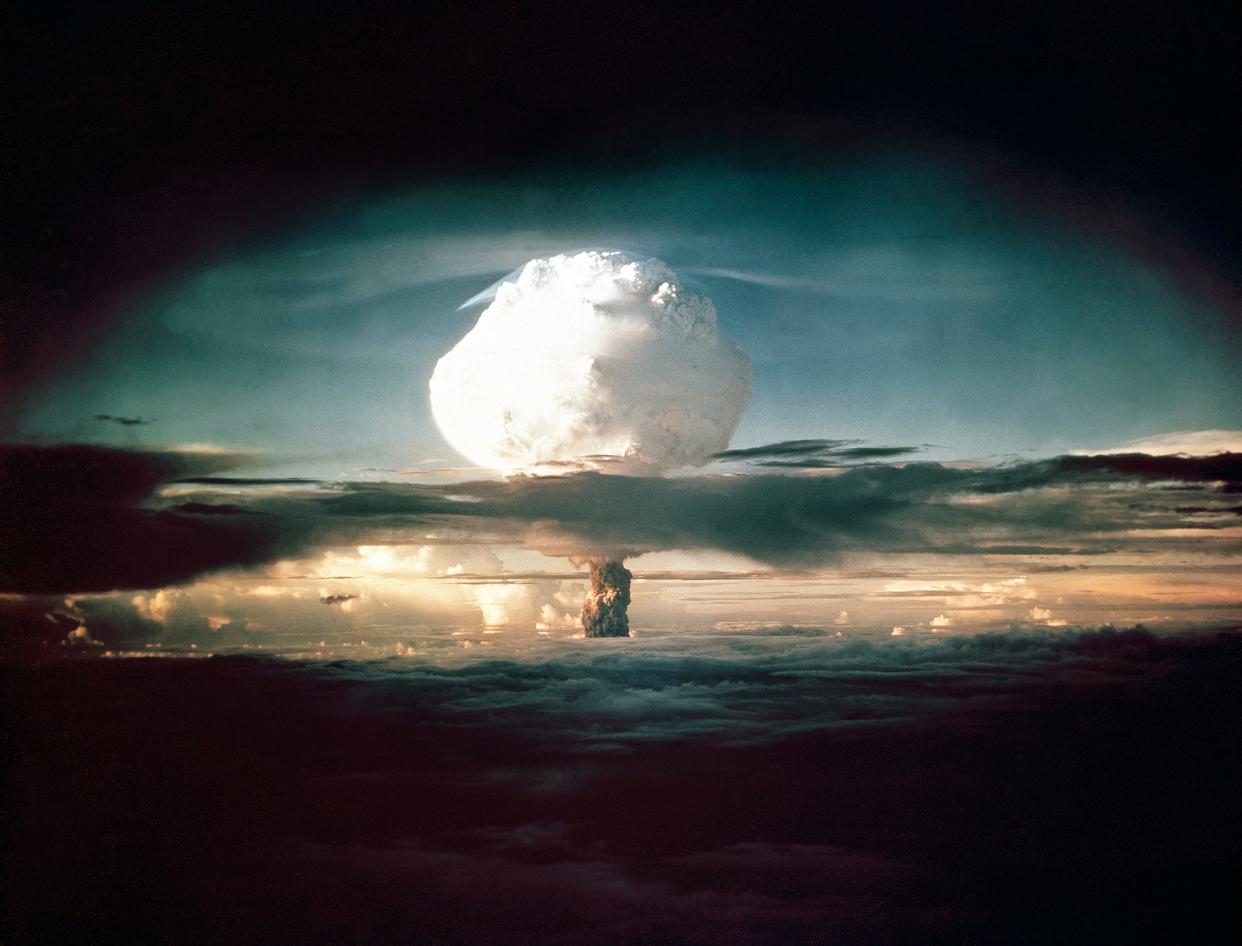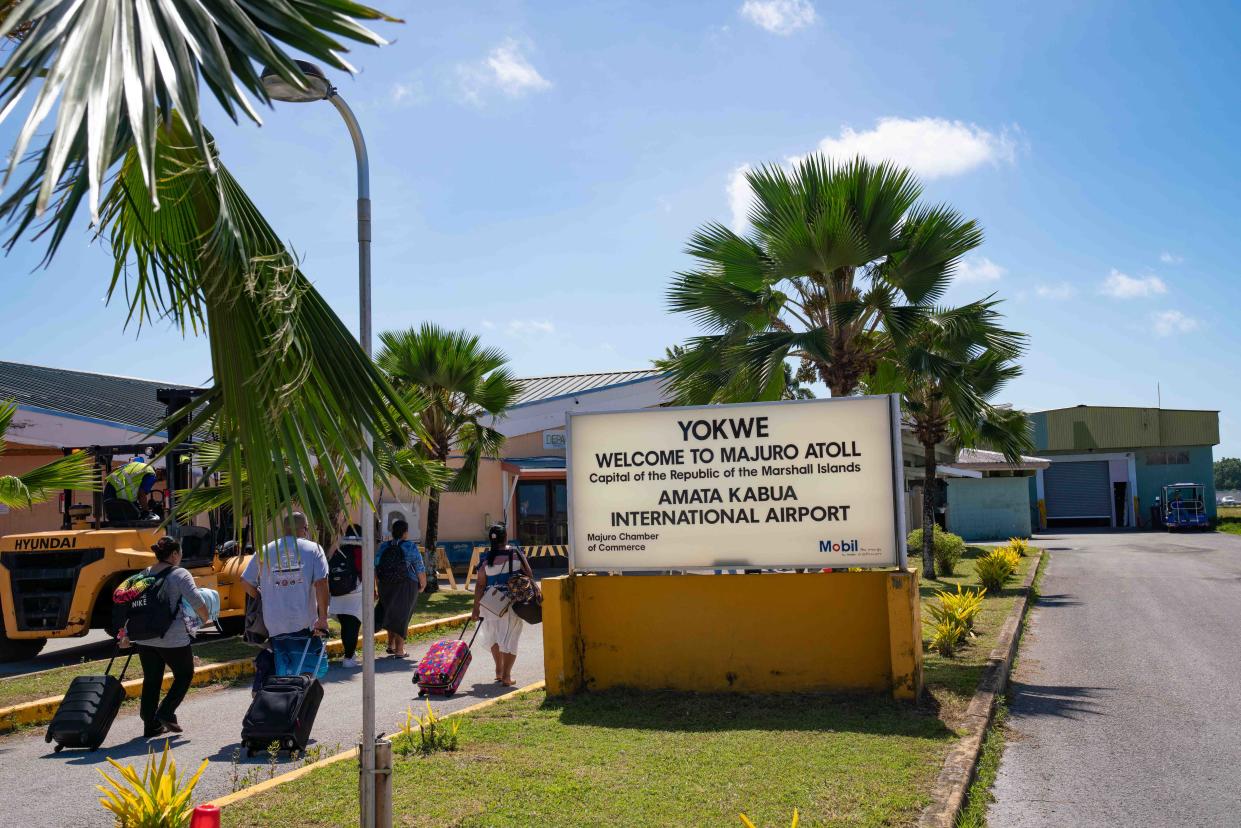You probably never heard of this destination: 6 cool facts about The Marshall Islands
Don’t be fooled by its mellow, slow-paced island lifestyle and pristine beaches, the Marshall Islands is a fascinating place with a rich ancient culture, dark history and uncertain future.
Located between Hawaii and Australia, the country is one of the world’s youngest and smallest, but not many people will ever experience the warmth of the Marshall Islands – both its tropical climate and hospitable culture. The very remote atoll nation remains one of the least visited countries in the world – only about 6,000 people a year make the trek to the middle of the Pacific Ocean.
It's an exciting time for the Marshall Islands right now. The country is seeing its first wave of scientists and engineers who want to help the islands become more sustainable. The country also hopes to welcome more tourists and share its natural beauty and oceanic culture.
If you’re unable to make the journey to the Marshall Islands but want to learn more about the under-the-radar country, here’s what you should know.
1. The country is bigger than you think – sort of

The island nation comprises two parallel atoll chains for a total of 1,200 islands and islets. Although that sounds like a lot, when combined, it only takes up a land area of 70 square miles, making it one of the smallest countries in the world. However, these islands are spread out over nearly 750,000 square miles – about 4 ½ times as big as California. Reaching the outermost atolls, many of which are remote and uninhabited, can take multiple nights via boat.
More: Talk about ‘hidden gems’: One of the least-visited countries wants you to check it out
2. The entire country received access to clean water this year

In late July, the Marshall Islands achieved an impressive feat: border-to-border access to clean water, also known as the United Nation’s Sustainable Development Goal #6. Outdoor gear company Sawyer Products partnered with local female-run nonprofit Kora in Okrane (KIO) to pass out filtration systems called the Sawyer Bucket System, which removes 99.99999% of bacteria, to every household at no cost.
Before the five-year-long initiative, families had to either boil or use chlorine to treat rainwater or groundwater from catchment tanks. Hailing from Wotje Atoll, Carrley Lang and her family used to boil rainwater each morning and store it in a cooler for the day’s use. Since the summer of 2019, her family has been using water directly through the Sawyer filter. “Life is easier now,” she said.
For some families, this extra step was a hassle, and buying bottled water was financially unrealistic, so many ended up sick from E. coli or other contaminants.
“Well, if you're trying to survive, the last thing you want to worry about is an outbreak of diarrhea, or, you know, waterborne diseases that are preventable,” said Moriana Philip, general manager for the Environmental Protection Agency in the Marshall Islands.
3. The islands may disappear within our lifetime
The residents of the Marshall Islands are on the front lines of a dire existential threat: their low-lying island home could become uninhabitable as early as the 2030s due to climate change. Extreme droughts and flooding will cause damage to buildings, crops and freshwater resources, scientists say.
Already, the Marshall Islands is experiencing more nuisance flooding, like those during king tides, which happen a couple of times a year.
“All of the streets that parallel the runway that’s flooded, and there are debris, boulders up to basketball and football sizes are strewn all across it so it impacts people getting to work on time and on their way back,” said Reginald White, a meteorologist for the Marshall Island’s National Weather Service.
Seawalls can be seen throughout Majuro to protect homes and other buildings from rising sea levels.
The Marshall Islands government created a Climate Adaptation Plan in 2020 that addresses potential adaptation scenarios and even social well-being like the mental health impacts of climate change and the cultural heritage at risk of disappearing.
4. There’s a heartbreaking nuclear legacy caused by the US

Between 1946 and 1958, the U.S. used four atolls in the Marshall Islands as nuclear testing grounds, detonating the same energy as 7,000 Hiroshima bombs. To convince the Marshallese to leave their homes, the U.S. Navy officials told them the testing was “for the good of mankind, and to end all wars.” The people of the Bikini, Enewetak, Rongelap and Utrik atolls left their land.
The atomic bombs, including the first hydrogen bomb detonation in the world, have caused irreparable damage to both people’s health and the environment. Almost instantly, people’s hair was falling out and they had burns on their skin. In the long term, cancer, miscarriages and birth deformity rates have skyrocketed. A 2019 study found that radiation levels in parts of Enewetak are nearly as high as in Chernobyl. People are still displaced from these atolls.
The Marshallese observe Nuclear Victims Remembrance Day on March 1 to honor those affected by the bombs. Many Marshallese feel as if the U.S. hasn’t done enough reparations despite the Compact of Free Association allowing Marshallese to work and live in the U.S.
5. There’s a huge time difference with the US

It’s a bit trippy traveling to the Marshall Islands from the U.S., more specifically from Honolulu. Think about it this way: the Marshall Islands is 2,285 miles west of Honolulu – nearly the same distance between Honolulu and San Francisco. When it comes to the time difference, San Francisco is ahead of Honolulu by three hours at worst and two at best. Flying to the Marshall Islands from Honolulu is about the same as flying to San Francisco but you end up ahead by 22 hours.
Blame crossing the International Date Line for this.
6. There’s a big Marshallese community in … Arkansas
Over the past decade, the Marshall Islands has seen a steadily declining population as many residents have migrated to the U.S. in hopes of a better life, according to data from the World Bank. As of 2022, it’s estimated that two out of five Marshall Islanders live in the U.S.
Most are seeking better economic opportunities since a great deal of available jobs in the Marshall Islands are low-paying. Many are also climate refugees as rising sea levels and extreme weather threaten their homes.
Although there are communities in Hawaii and along the West Coast, the majority of Marshallese migrants have found themselves in a place quite opposite to their tropical home: Springdale, Arkansas. About 12,000 Marshallese reside in Springdale and many arrive to work at Tyson Foods – about 30% of the company’s workforce are Marshallese. The nation’s only Marshallese radio station is transmitted in Springdale.
According to Coconut Wireless – the island’s way to say word of mouth – it was because of a Marshallese man named John Moody, who earned a scholarship for a college in Oklahoma and then worked at Tyson Foods in the 80s. When others back home heard of his new life, they followed suit.
This article originally appeared on USA TODAY: Hidden gem destination: 6 surprising facts about the Marshall Islands
